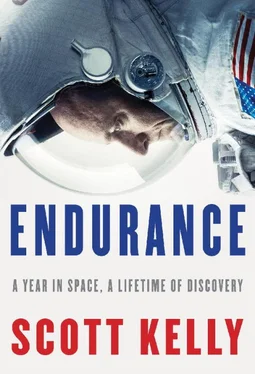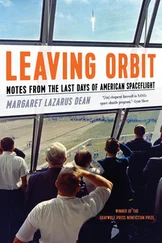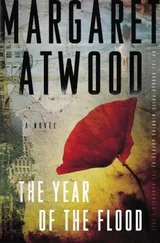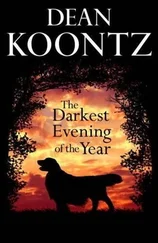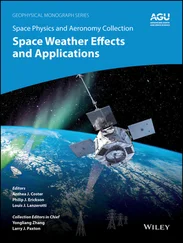Then I boltered, and boltered again. I am going to do this for the rest of my life, I thought. Eventually I put the airplane down on the deck in the right spot and felt the relief of the arresting cable’s tug as we came to an abrupt stop. As I taxied forward to be chained down, I noticed that my right leg was shaking uncontrollably from the adrenaline surging through my system after all those attempts and close calls. Mooch and I made our way off the flight deck, down the dimly lit corridors smelling of jet fuel, down the ladder, and into our brightly lit ready room. The pilots burst into applause when we walked in. They’d been watching our misadventures on a monitor the whole time.
“Welcome back to Ike. We never thought we were going to see you fellas again.”
It had been my first real “night in the barrel,” and I had survived it. (There’s an expression among naval aviators based on a bawdy old joke about a pilot finding sexual relief via a barrel, only to discover that his turn in the barrel was coming up.)
I laughed and accepted their congratulations.
“There are those who have,” I said, “and those who will.”
—
MY SECOND MEMORABLE bad night flying was in the Persian Gulf, on a night that was brilliantly clear at first. The moon was bright, what we called a commander’s moon because the air wing’s commanding officers would take advantage of it to log their night landings under easier conditions. My RIO Chuck Woodard (call sign “Gunny”) and I launched that night to protect Ike and its battlegroup from the Iranian air force. After about an hour, the carrier’s air traffic control told us we could return to the ship early. We had plenty of fuel, since we were coming back sooner than planned, so for fun, and to expedite our return, I lit the afterburner and we went supersonic. We were approaching the marshal point, an imaginary point twenty miles behind the ship where supersonic speed was not recommended. Normally I wouldn’t have been going that fast, but it was such a clear night it seemed safe.
I immediately sensed I was getting behind the airplane. Even though it was clear at altitude, a layer of fog had rolled in below us, and by the time we descended through five thousand feet above the water, I was having a hard time keeping up. I started feeling rattled, sweating with my heart pounding. I was having a “helmet fire.” Everything was happening too fast. I felt completely overwhelmed.
My altimeter alarm went off to warn me we were passing below five thousand feet; then it went off again to warn me we were getting even lower. It was a distraction, so I made the almost-fatal error of turning it off.
The next thing I heard was Gunny shouting, “Pull up!” Without thinking, I immediately pulled back hard on the stick, simultaneously looking over at the altimeter and vertical speed indicator. We were at eight hundred feet, dropping at four thousand feet per minute. About twelve seconds later, we would have flown into the water, becoming one of the many planes that never return to the ship. No one would have had a clue as to what had gone wrong.
With much difficulty, Gunny and I were able to gather our wits and land safely. We proceeded to my stateroom, where we cracked open a bottle of whiskey to calm our nerves and celebrate cheating death.
Leslie met me when I returned from that cruise, and I was thrilled to see her. While I had been gone, I had been deprived of so many things—the people I cared about, beer, decent food, privacy—and it was great to get them all back again. I would have the chance to experience that kind of deprivation again.
—
MY WEDDING DATE WAS set for April 25, 1992, a month after I returned from the cruise. That morning when I got up and started going through the process of getting ready—taking a shower, shaving, packing my bag for the honeymoon—a strange feeling of dread loomed over me. I kept poking at it in my mind, the way your tongue keeps going to a sore tooth. This was supposed to be as happy a day as any, like the day I landed on the aircraft carrier, or the day I got my wings, or the day I graduated from college. But all I felt was this strange foreboding.
All of a sudden, as I was knotting my tie, I realized I didn’t want to get married.
I cared for Leslie and enjoyed her company. But if I was being honest with myself, I wasn’t marrying her because I had been moved to in my heart. I thought about the six groomsmen who were prepared to stand up with me. They were all Navy men, some from my squadron who I hadn’t even known for very long. The people I had grown up with and been through trials with and who had been there for me for many years, were coming to the wedding, but they weren’t in the wedding party. Without being aware of it, I had created a Navy event rather than a wedding.
I felt I had no choice but to go through with it. I wasn’t going to disappoint Leslie and her family, or my own family. Mark was coming all the way from Japan, and I thought about how bewildered and annoyed he would be if he arrived to learn the wedding had been called off. By the time I was dancing with Leslie at our reception, I had managed to put all these thoughts out of my mind. Somehow it didn’t feel like a permanent mistake I was making. I was only twenty-eight. I would try to make this work, but if I couldn’t, I figured, I could get divorced.
—
I APPLIED TO U.S. Navy test pilot school in Patuxent River, Maryland, after two and a half years in the Pukin’ Dogs. Usually pilots serve in a fleet squadron for four years before applying, so I didn’t think I would be accepted, but I wanted to let the selection board see that my interest was serious and to familiarize myself with the application process. To my surprise, I was selected, and even better, my brother had been selected too, so we would be classmates. We started in July 1993. My biggest concern wasn’t my flying, which I had become pretty confident about, but the fact that I had almost never used a personal computer. I knew I would have to get comfortable with technology, so I asked a squadron mate to help me buy one and teach me how to use it.
Leslie and I headed to Patuxent River (everyone calls it Pax River for short), only a few hours from Virginia Beach. This would be the first time in my career that I spent much time with members of the other military services. The school had U.S. Air Force pilots, Marine pilots, Army pilots; there was an Australian F-111 pilot and an Israeli helicopter pilot. Some of the people in my class would later become astronaut colleagues: Lisa Nowak, Steve Frick, Al Drew, and of course Mark. Soon after we arrived, the senior class threw a party for us, called a “You’ll Be Sorry” party, warning us that we would be sorry for deciding to become test pilots because the training was so hard.
I didn’t find the academic work particularly grueling, though I had to review some calculus and physics. We learned about aircraft performance, flying qualities, flight control systems, and weapons systems of the aircraft we might be testing. We also spent time familiarizing ourselves with the airplanes we would fly regularly during training. For the fixed-wing pilots like me, that meant the T-2 again, as well as the Navy version of the T-38, a much more challenging airplane. Friday nights were spent at the BOQ bar or at the home of one of my classmates. The weekends we spent doing homework.
As we got checked out in the T-38, I found landing particularly challenging, because I had gotten out of the habit of flaring an airplane—pulling back on the stick as you get closer to the ground to arrest the rate of descent prior to touchdown. When we land on a carrier we approach and land with a constant rate of descent. We also started flying other airplanes, generally with instructors or classmates who were checked out in them. This was all meant to expand our flight experience base. We also learned to write technical reports, a large part of the program. Experimenting and collecting data on a specific aspect of the airplane, then writing a detailed report on the findings, take more of a test pilot’s time than actually flying airplanes.
Читать дальше
